Once there were festivals dedicated to it. Elvis sang about it in the song "Polk Salad Annie". At one time you could even buy it in a can. American pokeweed is a fascinating edible plant with deep roots in the South, and a culinary tradition that deserves to be rediscovered. Confusingly, it's also a poisonous to humans improperly prepared. Years in the making, today I'll explain everything you need to know to prepare pokeweed (poke salad) safely.
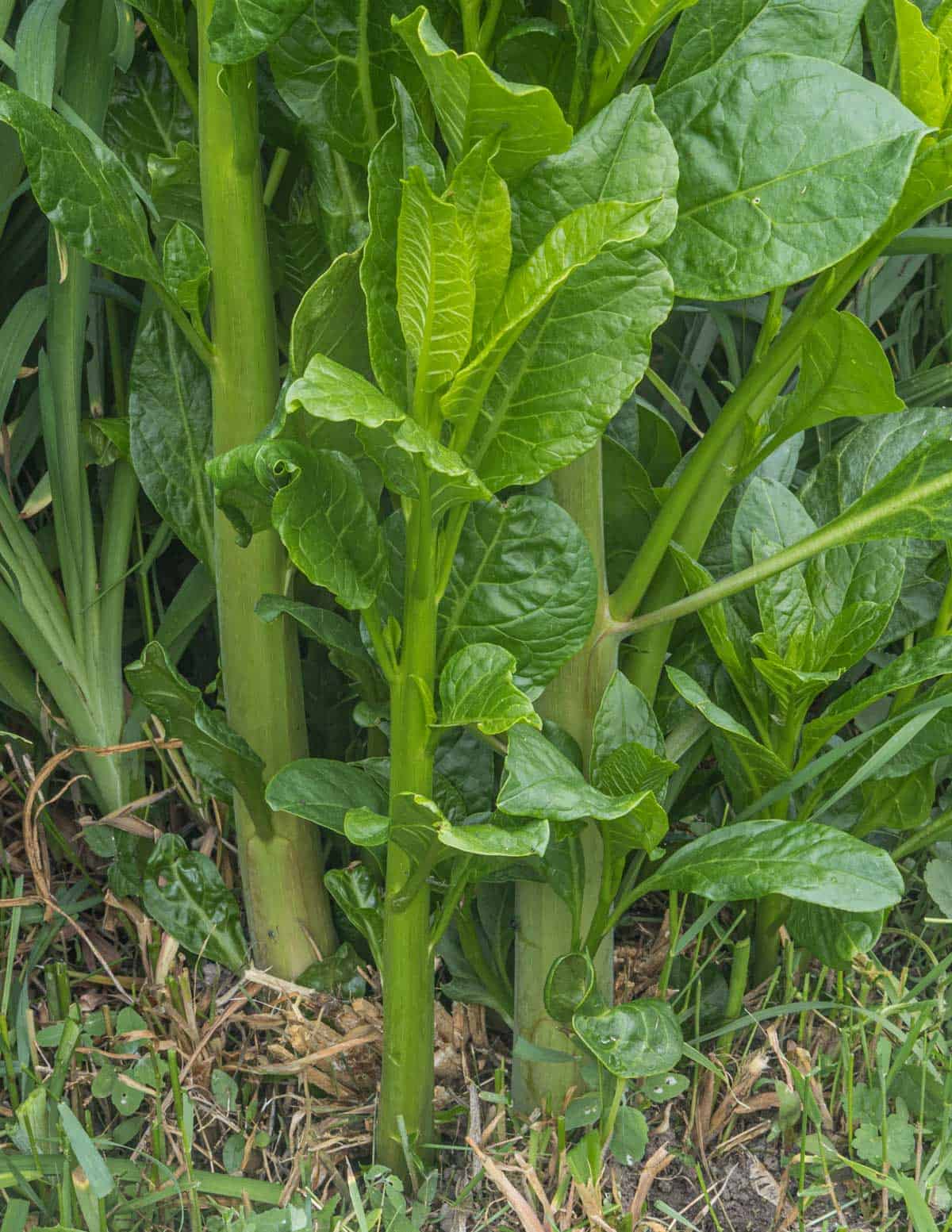
Per usual, I need to thank Sam Thayer. In 2020 we planted poke roots he'd harvested. Without his book the the plants he brought, I wouldn't have been able to get thick pokeweed shoots to peel, which are the best part of the plant to eat.
What is Poke Salad?
American pokeweed (Phytolaca americana) is a perennial plant native to Eastern North America, The South, and The Midwest. The common name poke salad or poke sallet is derived from the old French word for salad. Historically sallets weren't raw, but instead referred to cooked greens. The plant is highly poisonous raw, but edible, and delicious when properly prepared.
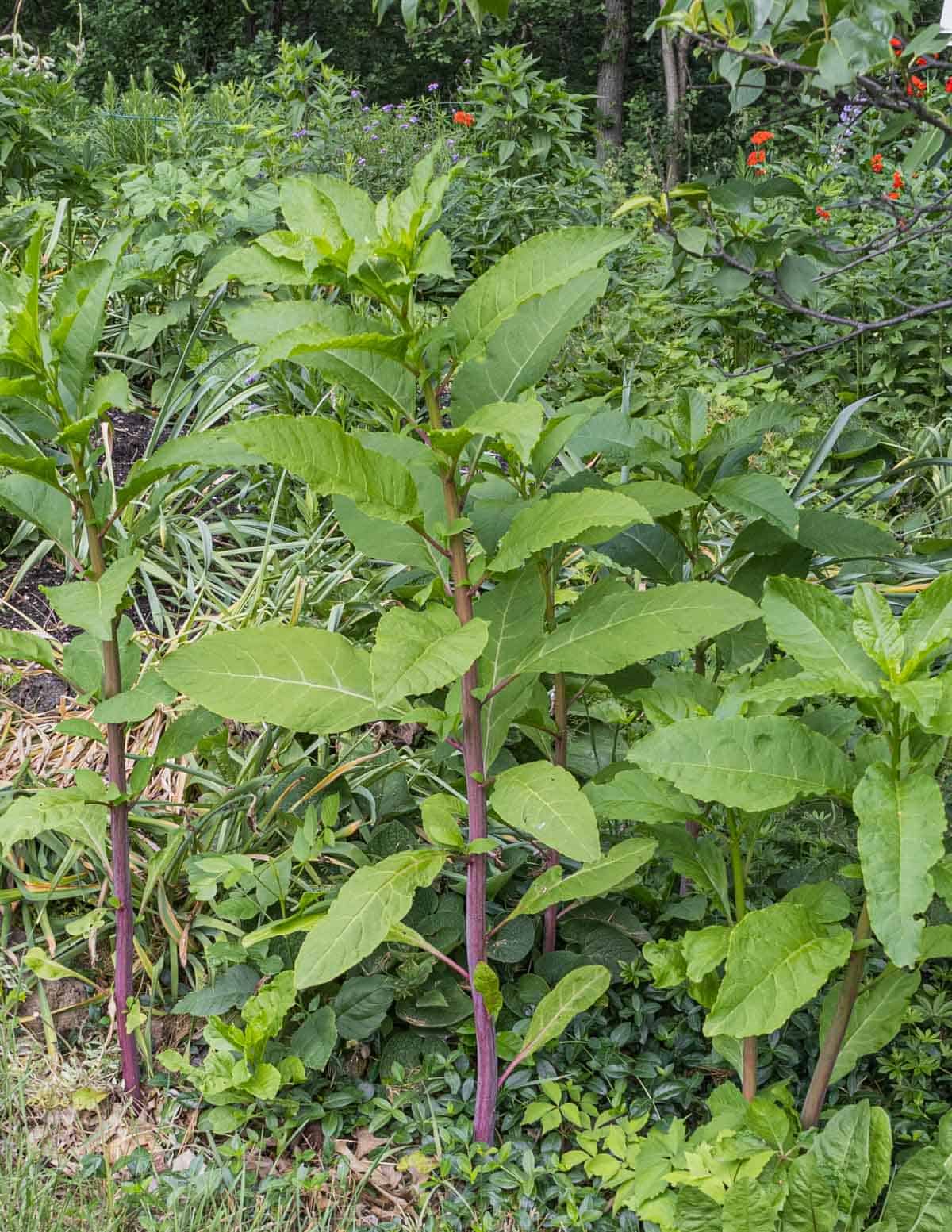
The plant has a history of being used as food, medicine and a coloring by indigenous people long before others ate it. Daniel Moerman writes that the Cherokee crushed the fruit with grapes to make a sweetened drink, and that the shoots and greens were eaten as a food by Mohegan, Malecite, Iroqouis, and undoubtedly many other tribes. For the record, I cannot recommend eating pokeweed berries. Besides being dangerous, they don't taste good.
If you want to read some striking, real-world accounts of people poisoning themselves by improperly ingesting the plant, read this article.
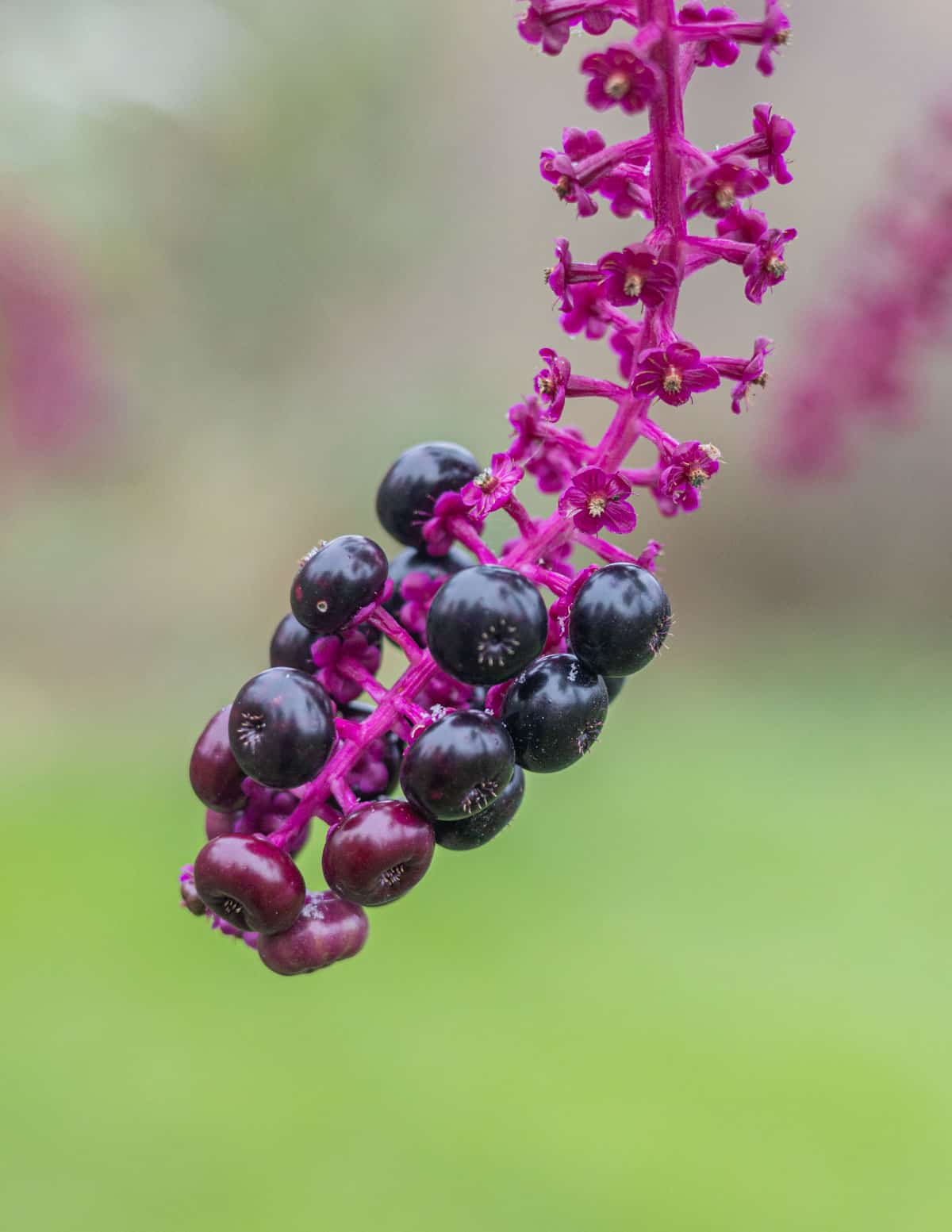
My friend Kayce at Health Primitive shared with me the Algonquin / Powhatan name Puccoon, meaning red dye. She said indigenous people may ferment pokeberries in pumpkins to make a thick coloring used on the body or for war items.
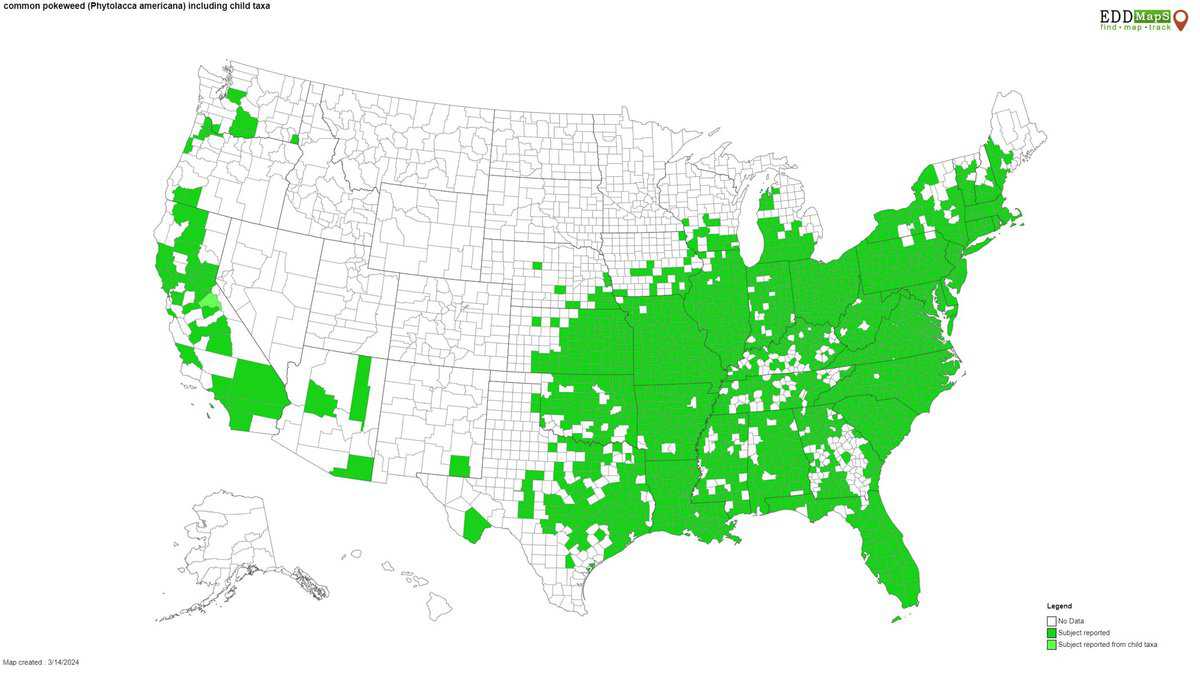
Above: common pokeweed native range in North America. Although not on the map, I harvest it in Minnesota. Sam Thayer grows it in Northern Wisconsin.
Harvested along fence rows and ditches, poke was, and is seen as a poverty food. But, unlike a block of government cheese, eating pokeweed is far from a punishment. The mild, pleasant grassy flavor of the greens and tender shoots is easy to love. It's also one of the easiest edible wild plants to harvest in large quantities.
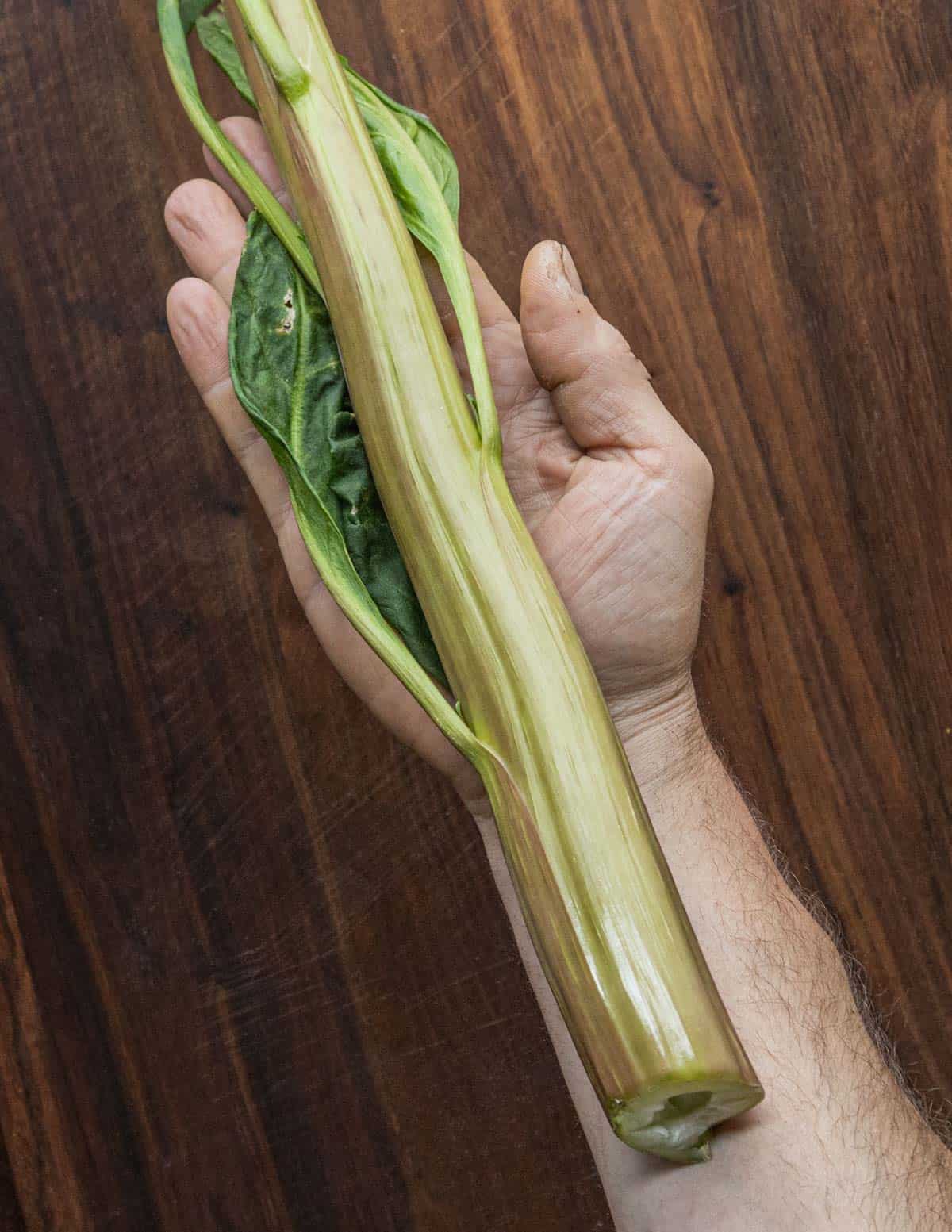
There's also a famous song about the plant. My first introduction to it was Elvis's cover of the song Polk Salad Annie. It's about a poor woman who collected poke.
For many years the plant was so popular that poke greens were sold canned in the South. Allens of Arkansas appears to be the last company to sell the greens. Unfortunately, they discontinued selling canned poke in 2000.
Like ramps, there's even spring festivals dedicated to the plant to this day, like the Harlan County Polk Salad Festival in Kentucky. Sadly, just like canned poke, It's now a music and arts festival, with no one eating pokeweed.
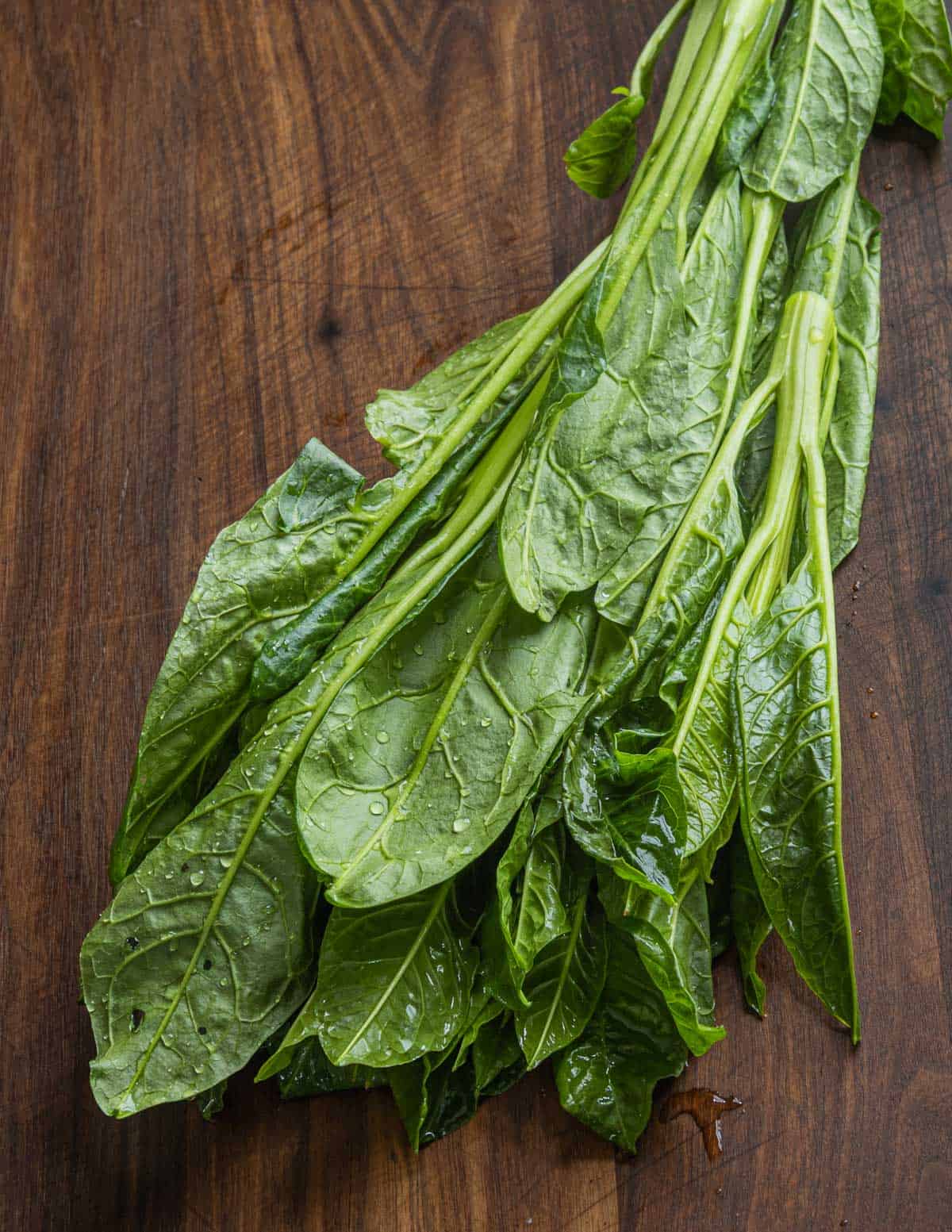
Pokeweed Identification
An incredibly fast growing plant, pokeweed grows in clumps of shoots that can grow 1-3 meters tall. The shoots come from a fleshy taproot under the ground, and are light green when young, turning red at maturity. The berries attract birds which help it spread where it's established.
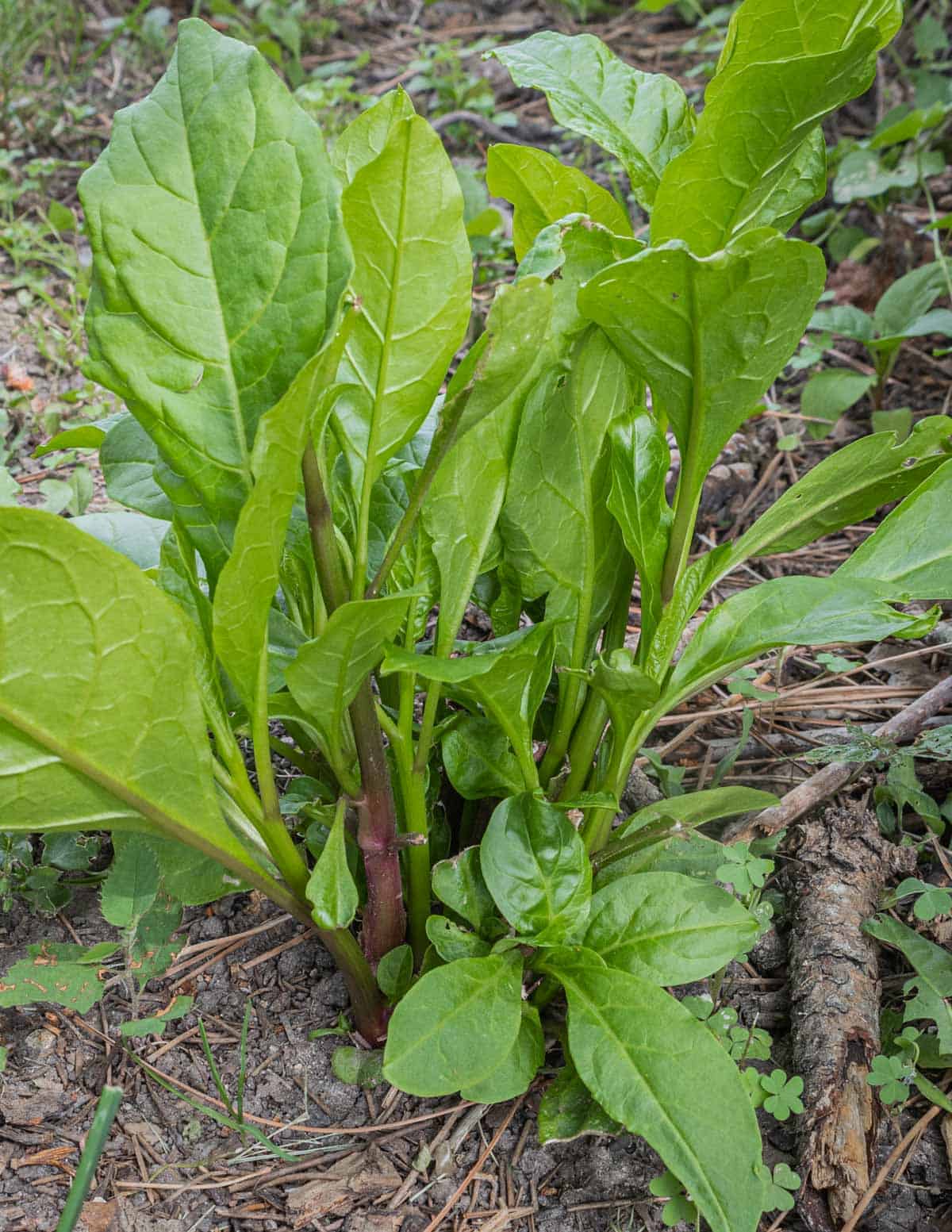
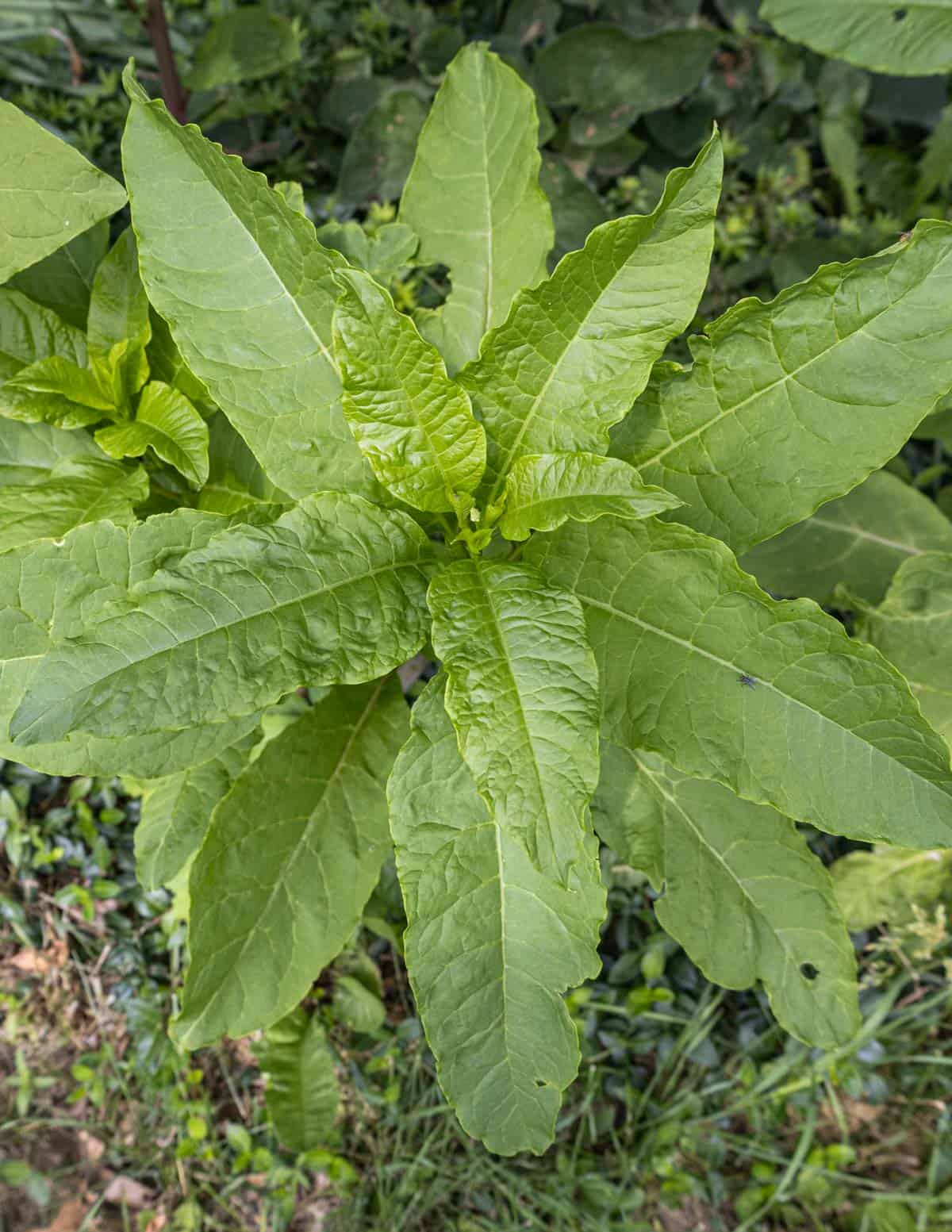
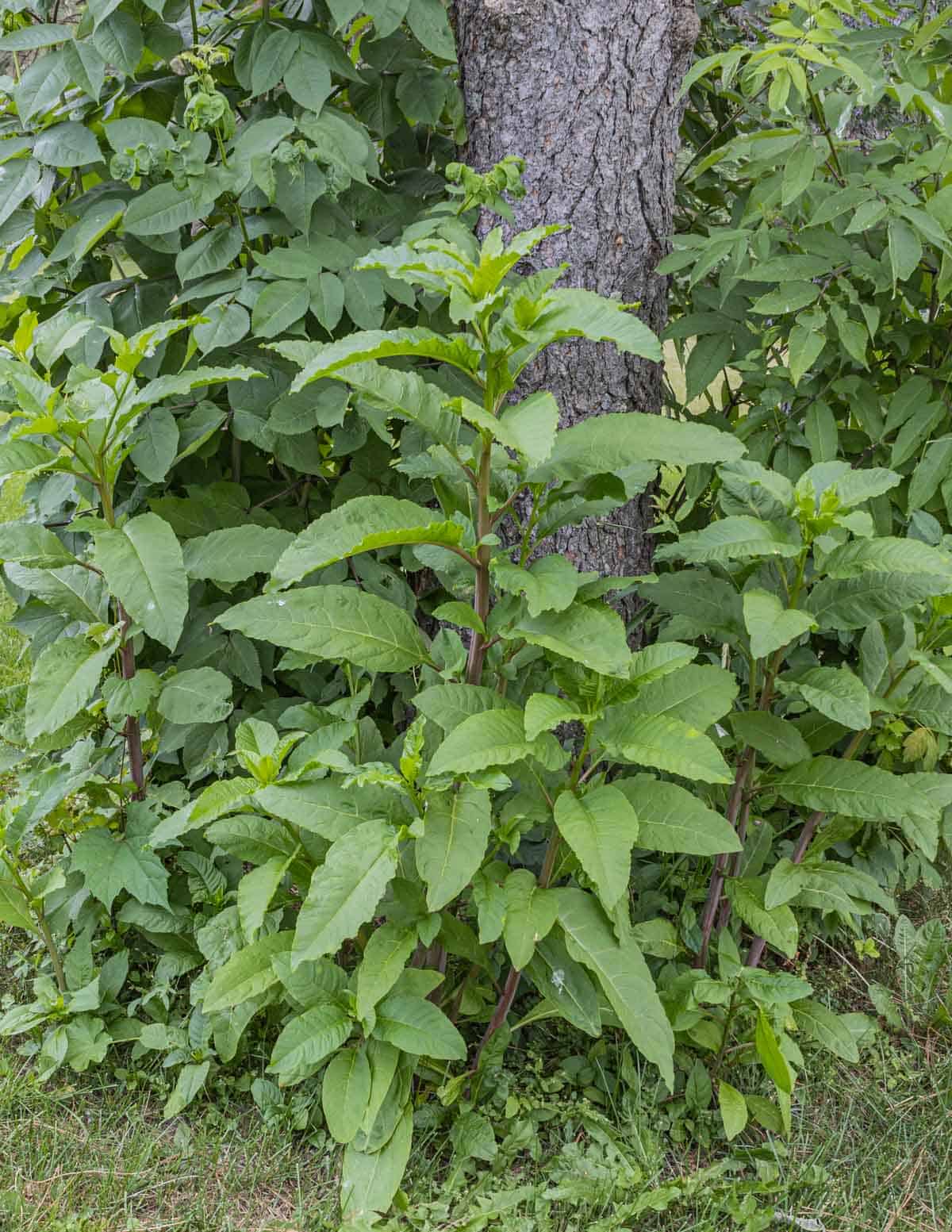
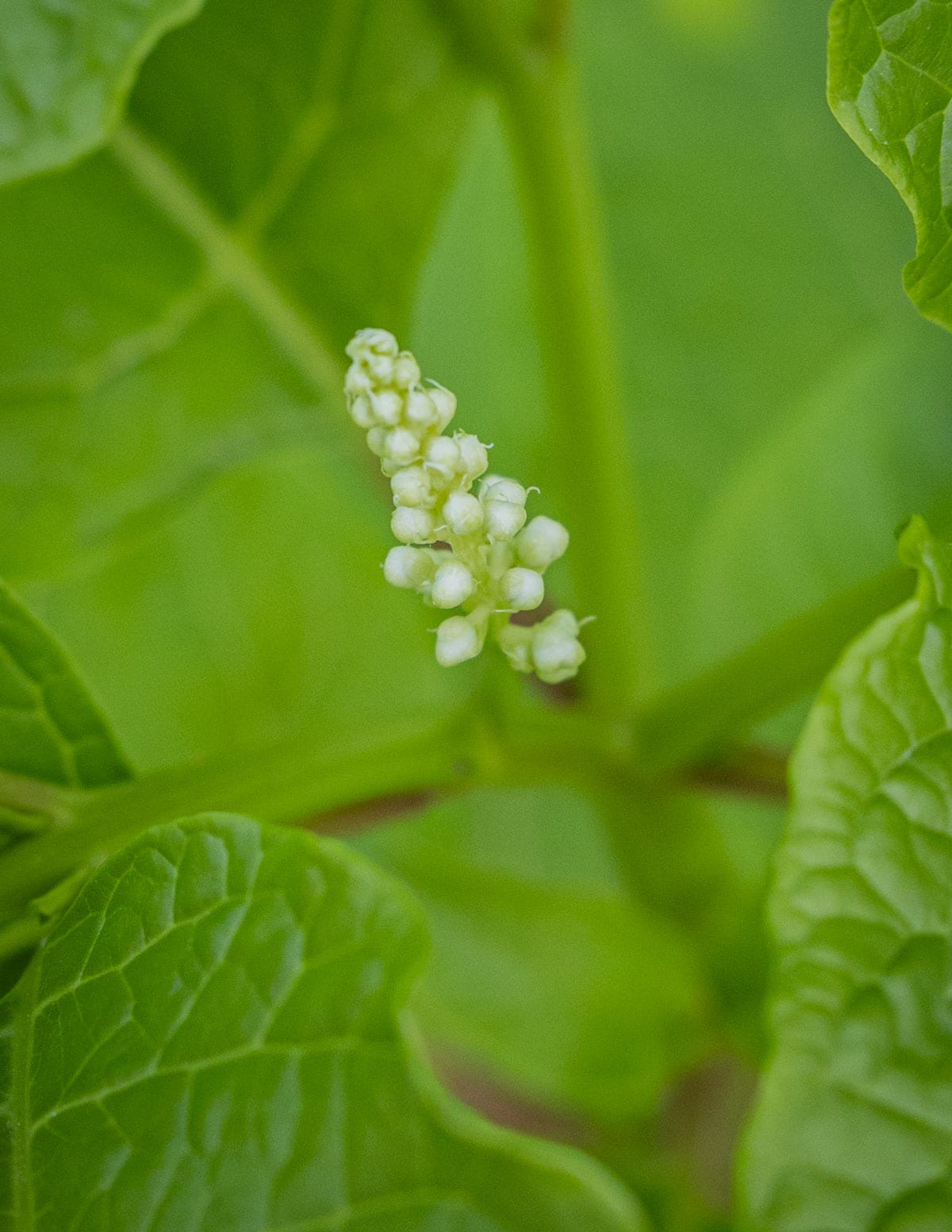
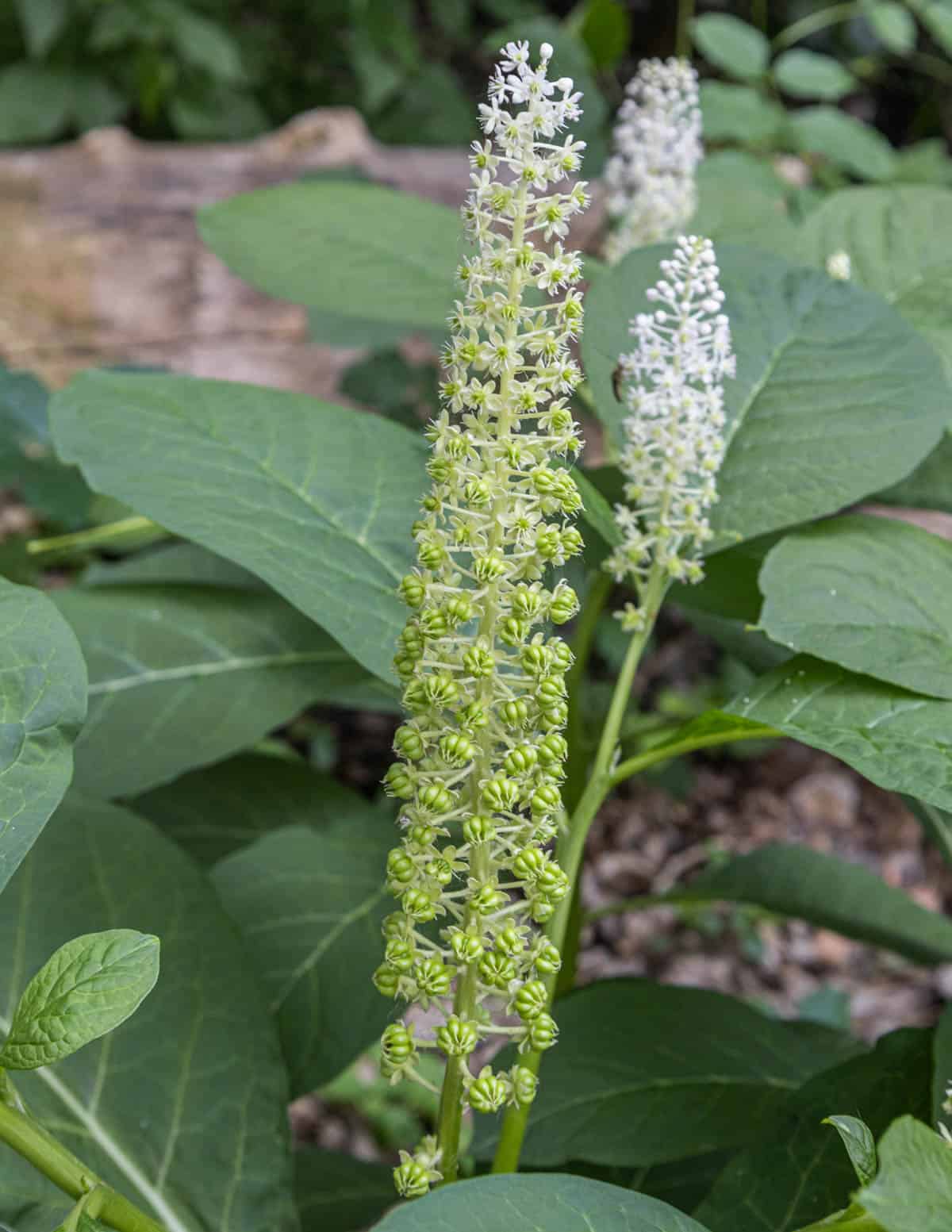
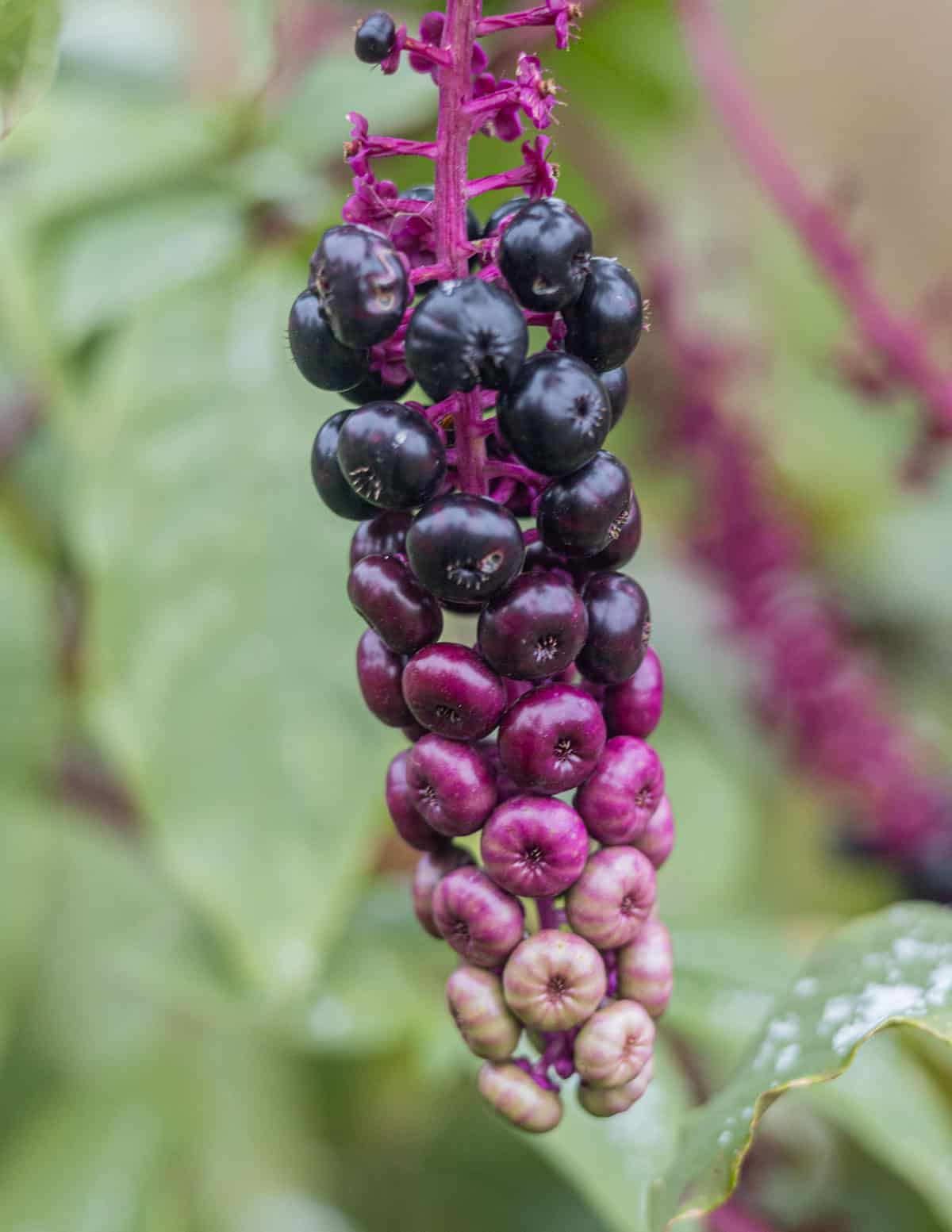
As the plant grows and matures, the stems typically change color from green to purplish red, although the stems of some plants in shade may stay green. The stems of tall plants in full sun are almost always red.
Both red and green stems are edible, despite the common misconception red stems are not. With taller, thicker shoots, I find red-stemmed plants can be tougher than green stems and I recommend peeling them if possible.
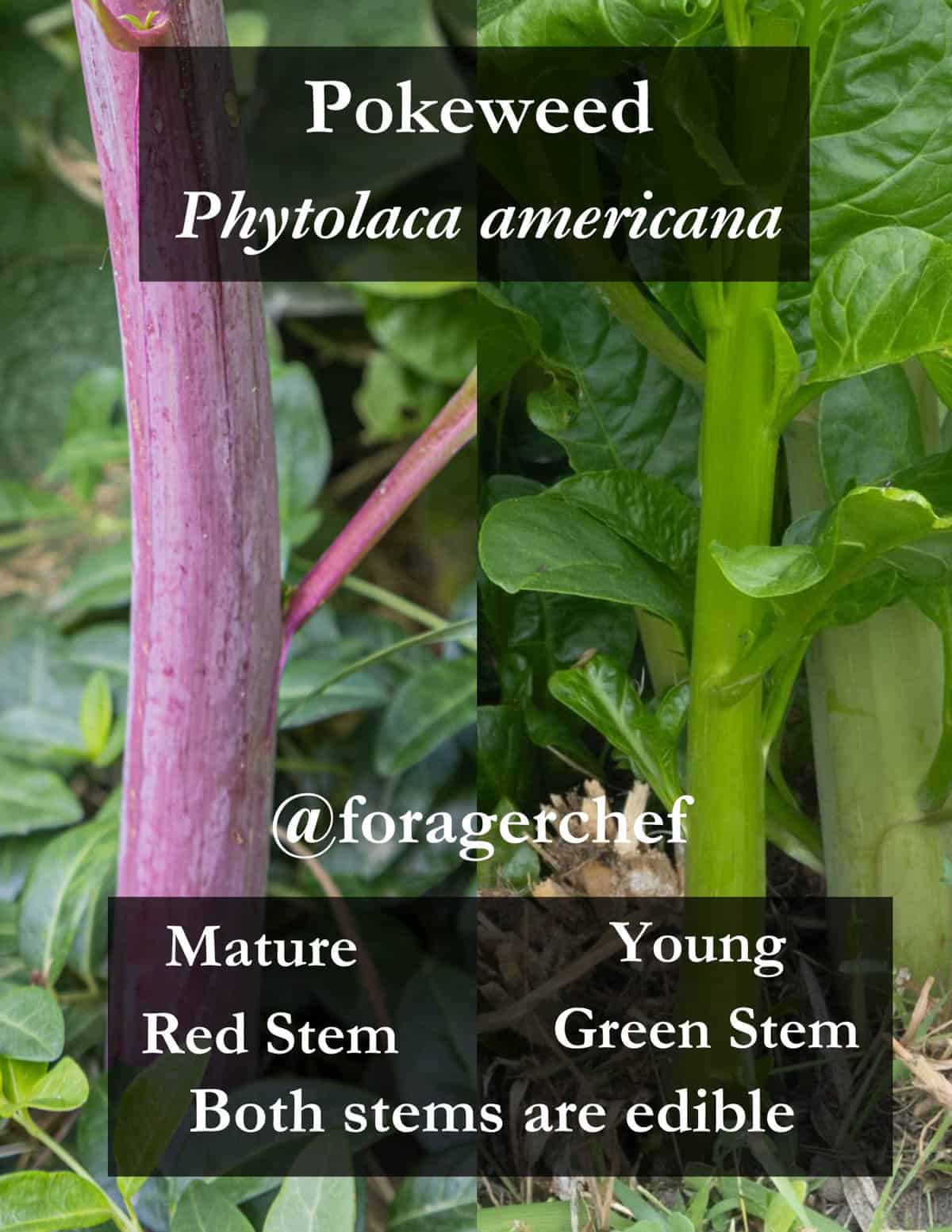
There's not a lot of pokeweed look alikes, but some people confuse the plant with Japanese knotweed. Knotweed resembles bamboo where pokeweed is more of a leafy green with a thick stem. I made a little side-by-side comparison for you below.
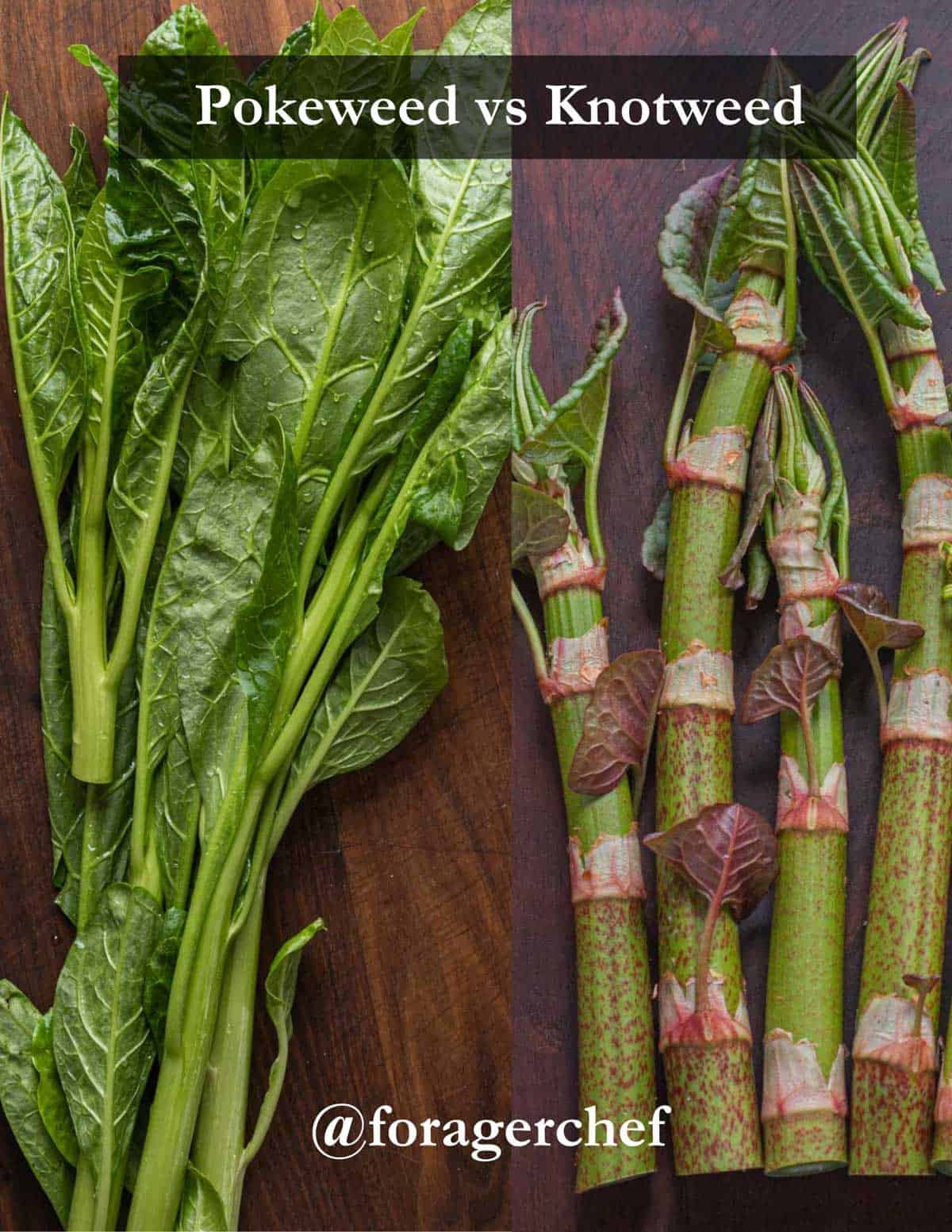
When to Harvest Pokeweed
There's lots of confusion about when poke can be harvested for cooking. Here's a few key points.
- The plant can be harvested any time it's meristematic (young and tender) which means you need to harvest the plant before flowers appear.
- Older plants are not more poisonous than younger plants.
- The height of the plant is not necessarily an indication of age. The larger the poke root is, the larger the shoots will be.
To harvest poke, simply cut the plant at the base. Some people can get dermatitis, rashes or blisters from touching the cut portions or getting the sap on their skin. I've never had an issue or reaction from it but it appears well documented.

How to Cook Pokeweed
There's a lot of well-intended, but misinformed folk wisdom surrounding how to safely cook poke. In my mind, the most important things to know are this:
- The plant must be boiled multiple times to be safe to eat.
- The root is the most poisonous part of the plant, ingestion, especially raw, could be fatal.
- Plants with developed roots will make shoots a few inches wide which are the best for eating.
- The toxins are stronger in the leaves and skin of the shoots than in the peeled shoots.
- Peeled shoots require less cooking than young plants where the leaves and shoots are cooked together.
To be safe to eat, the plants must be boiled multiple times. There's more than one way to do this. Sam Thayer, recommends two boils in a change of water for about 12 minutes total.
But, depending on if you're cooking greens or peeled shoots, the cooking times and number of boils can differ. With that in mind, lets go over the differences between cooking poke greens and large, peeled shoots.
How to Cook Poke Greens
Young plants with shoots not large enough to peel are chopped up and boiled. I boil them 3 times for 3 minutes each. After boiling the plants are safe to consume and can be cooked like any other leafy green.
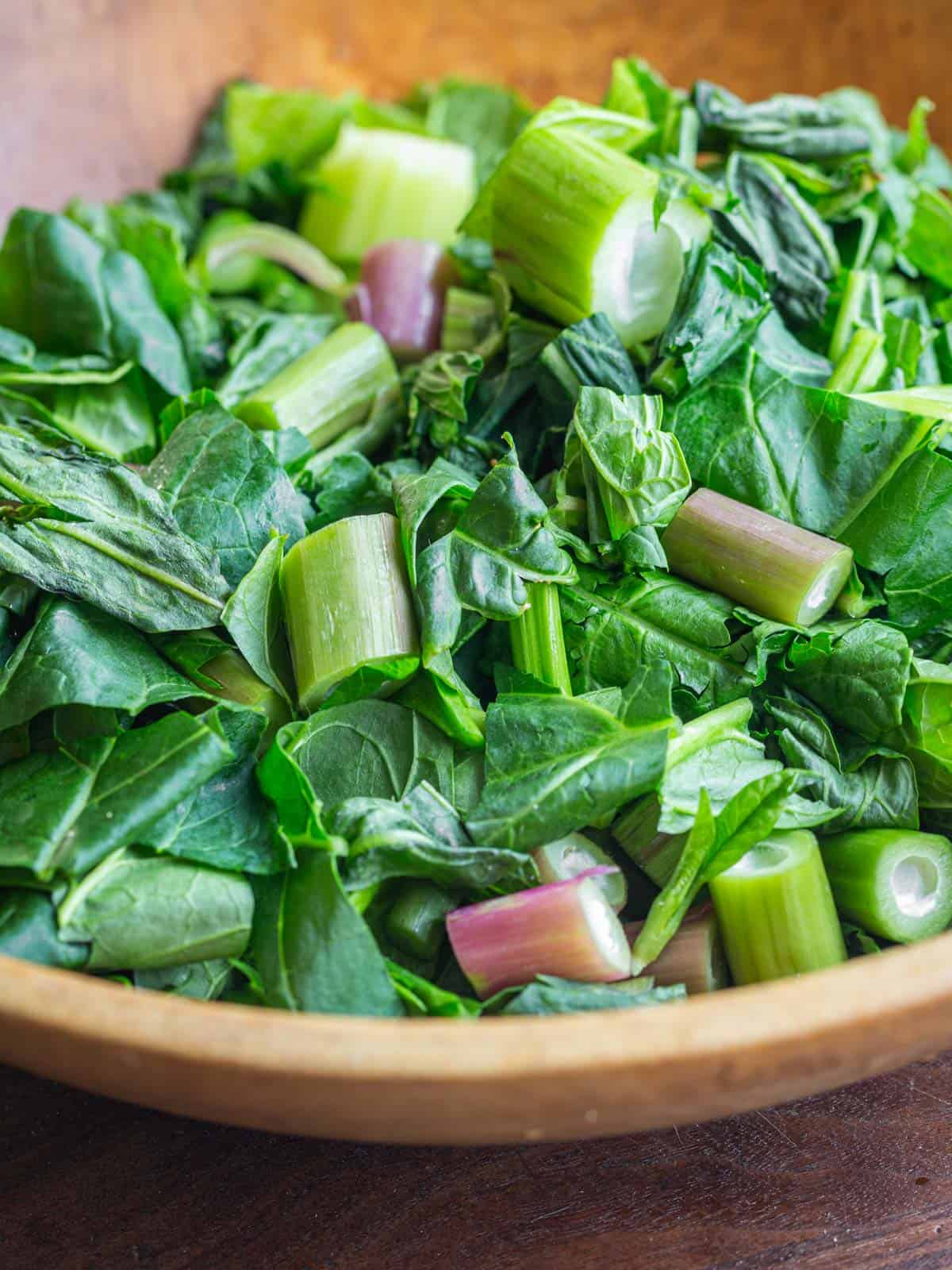
Pokeweed Shoots
Older, established poke plants make shoots you can peel and are the easiest to cook. They retain more texture than the greens and have a delicious, mild flavor similar to burdock flower stalks.
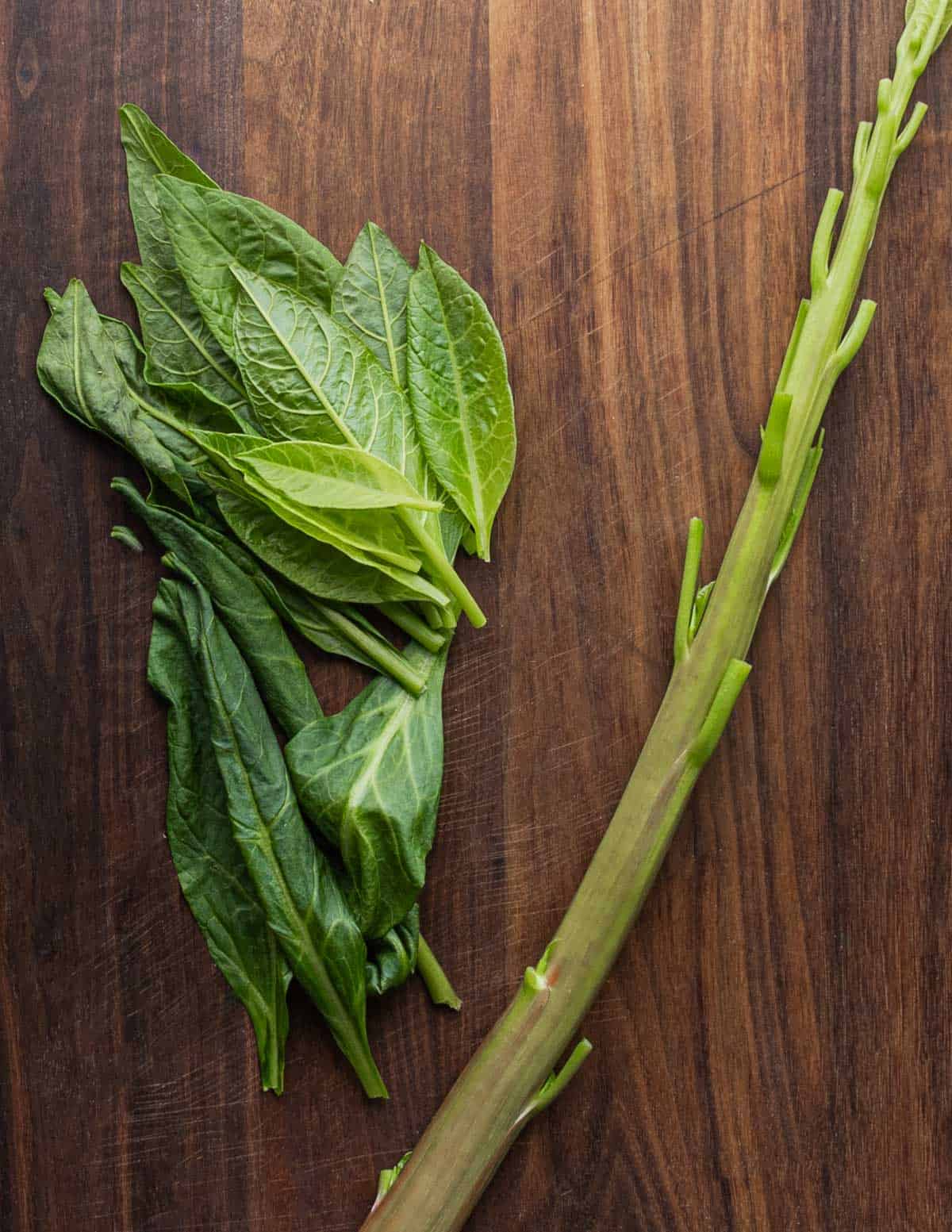
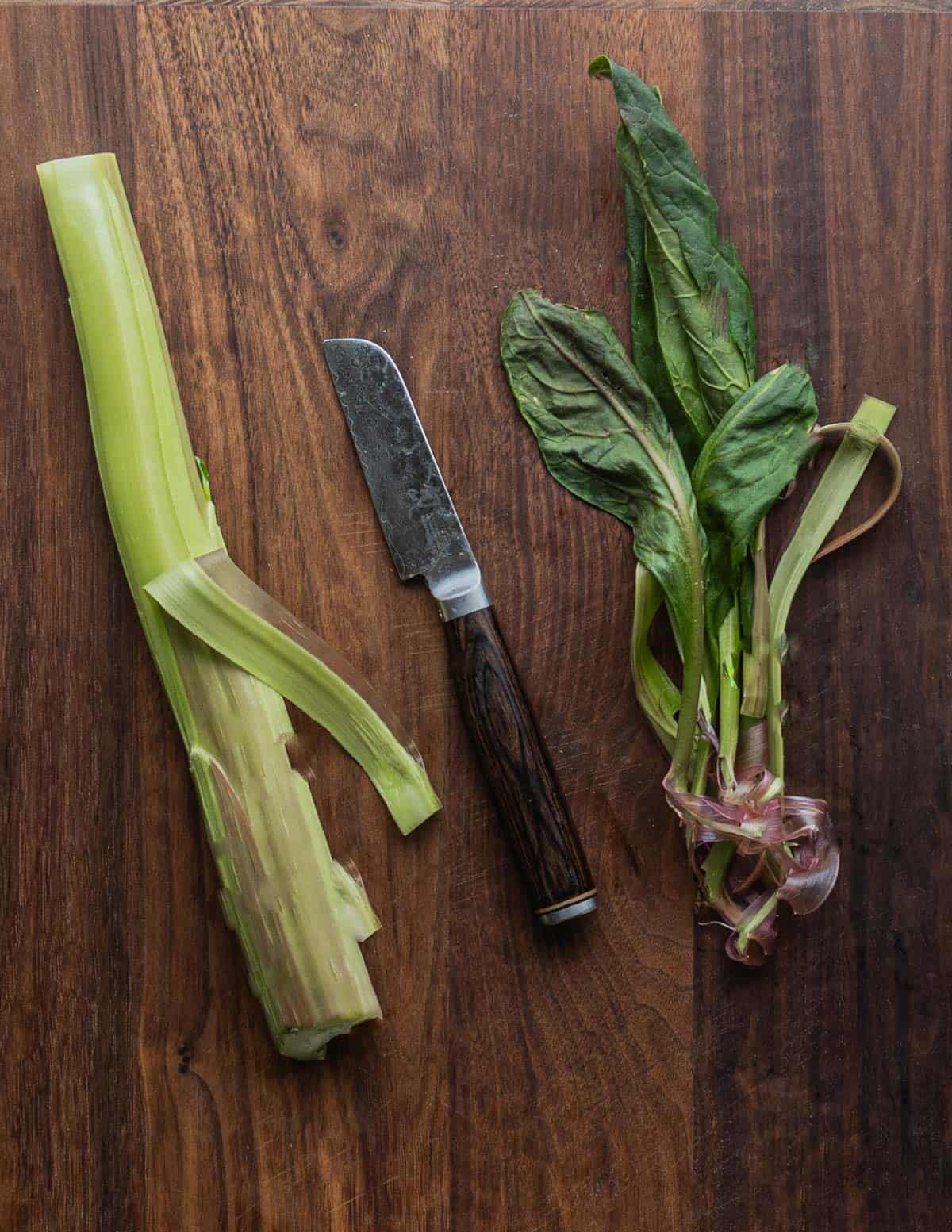
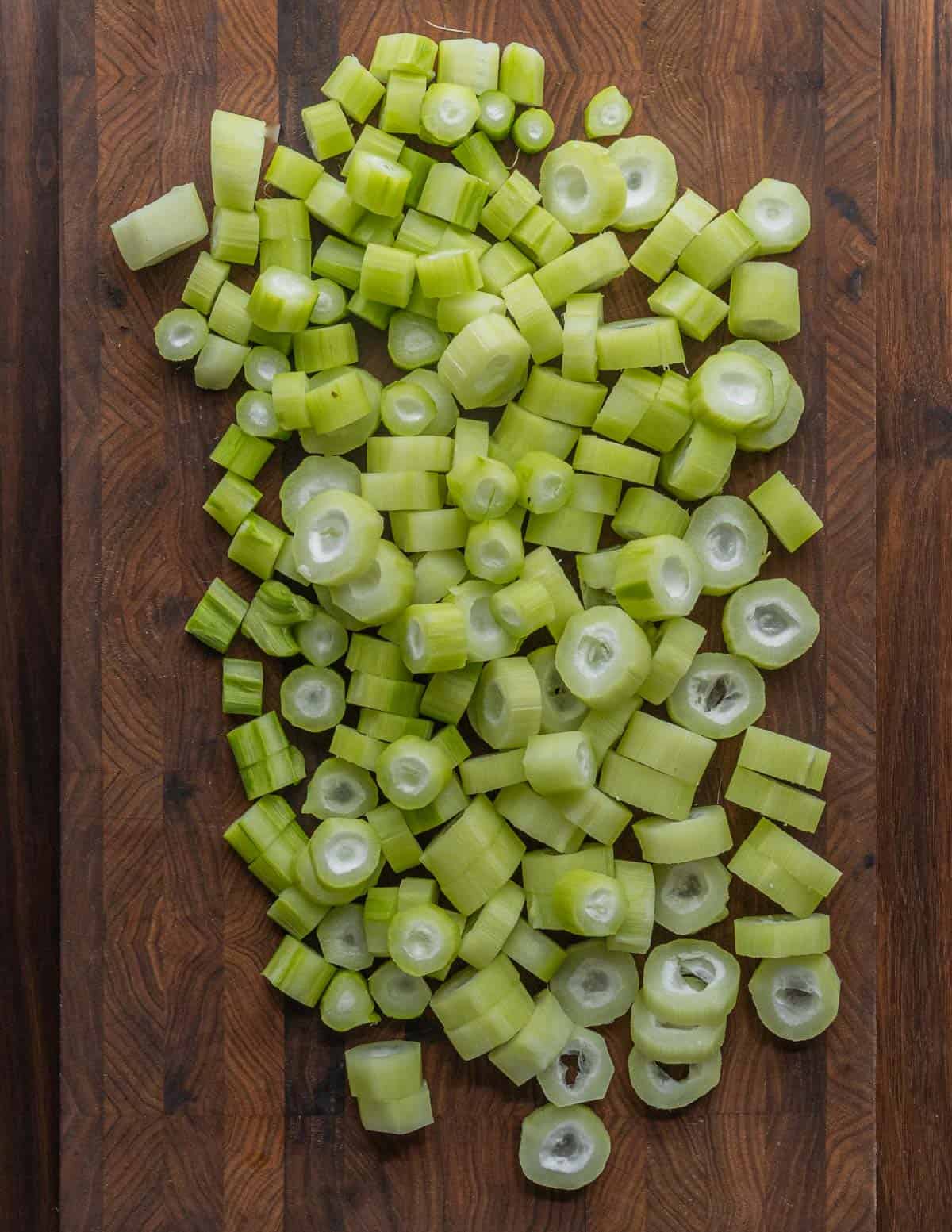
Since the toxins are concentrated in the skin and leaves the shoots only need to be boiled once. I cooked peeled poke shoots for 8-10 minutes.
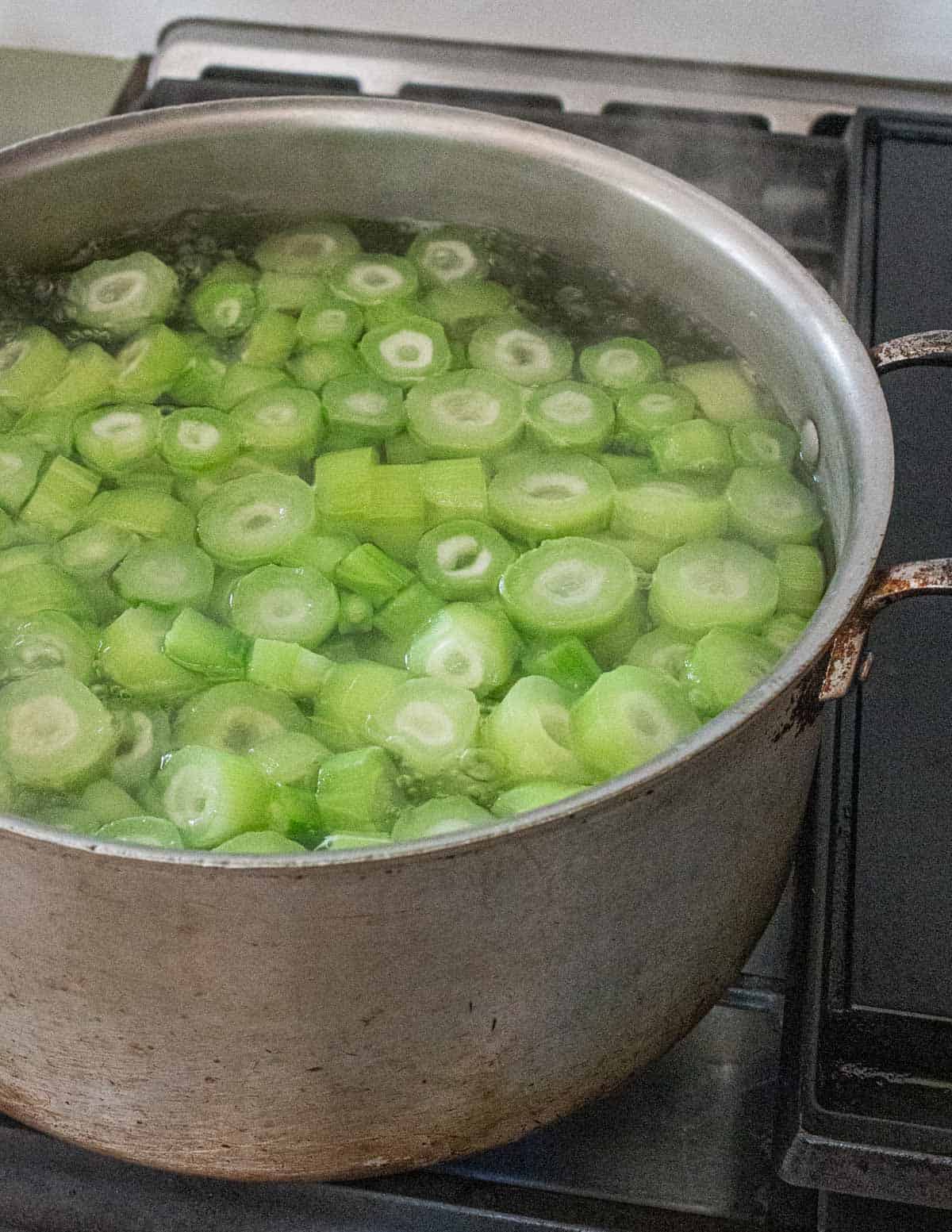
After the greens or shoots are boiled they can be cooked like any other leafy green.
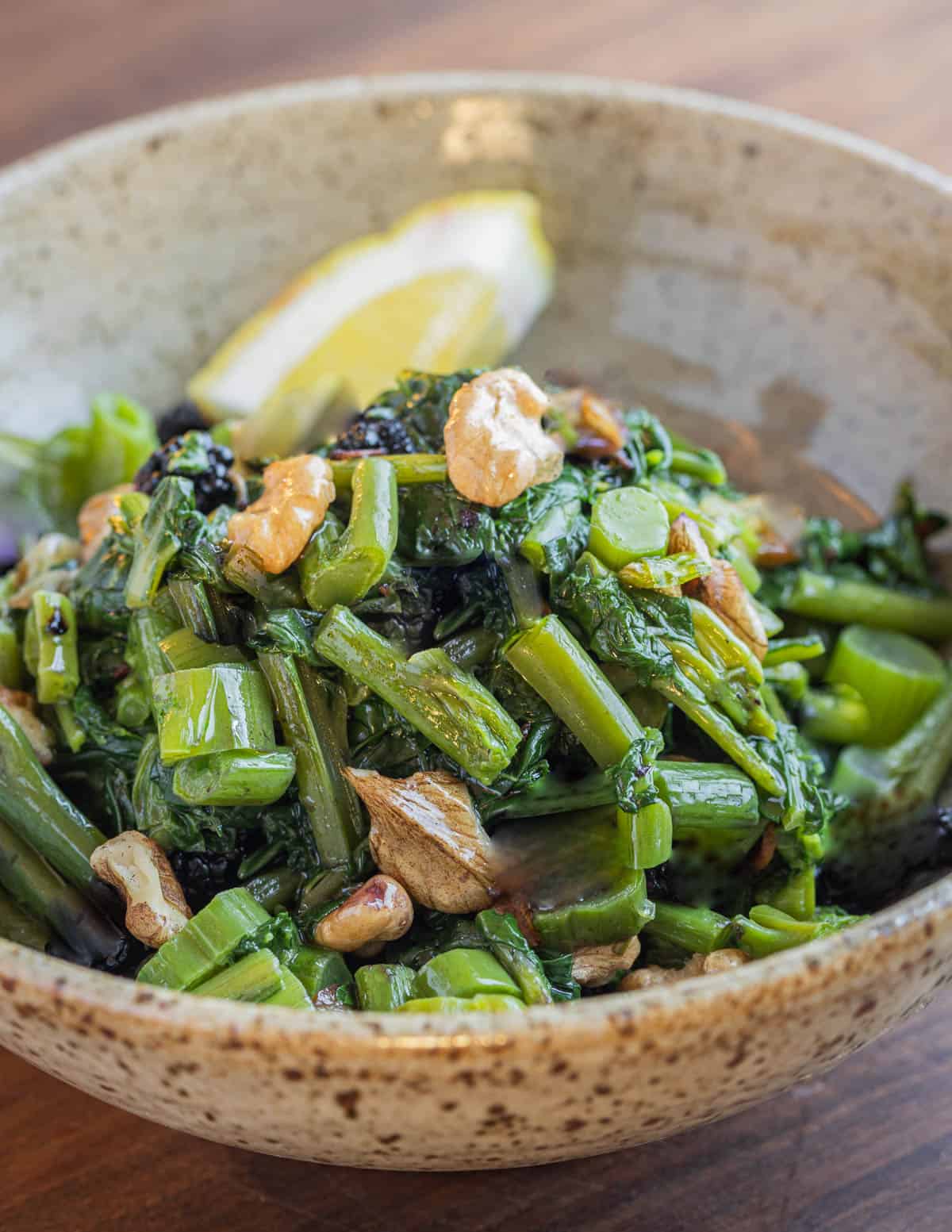
Most of the time poke is simply served as a cooked leafy green side dish. There's one traditional recipe everyone should try though: polk salad with scrambled eggs and bacon.

A satisfying meal, the greens or shoots are mild tasting and meltingly tender. Crisp bacon and tender eggs add a contrast in texture. I like mine mine with hot pepper vinegar or hot sauce.
The shoots, dressed with mixed herbs, butter and lemon make a good all-purpose side dish, too.
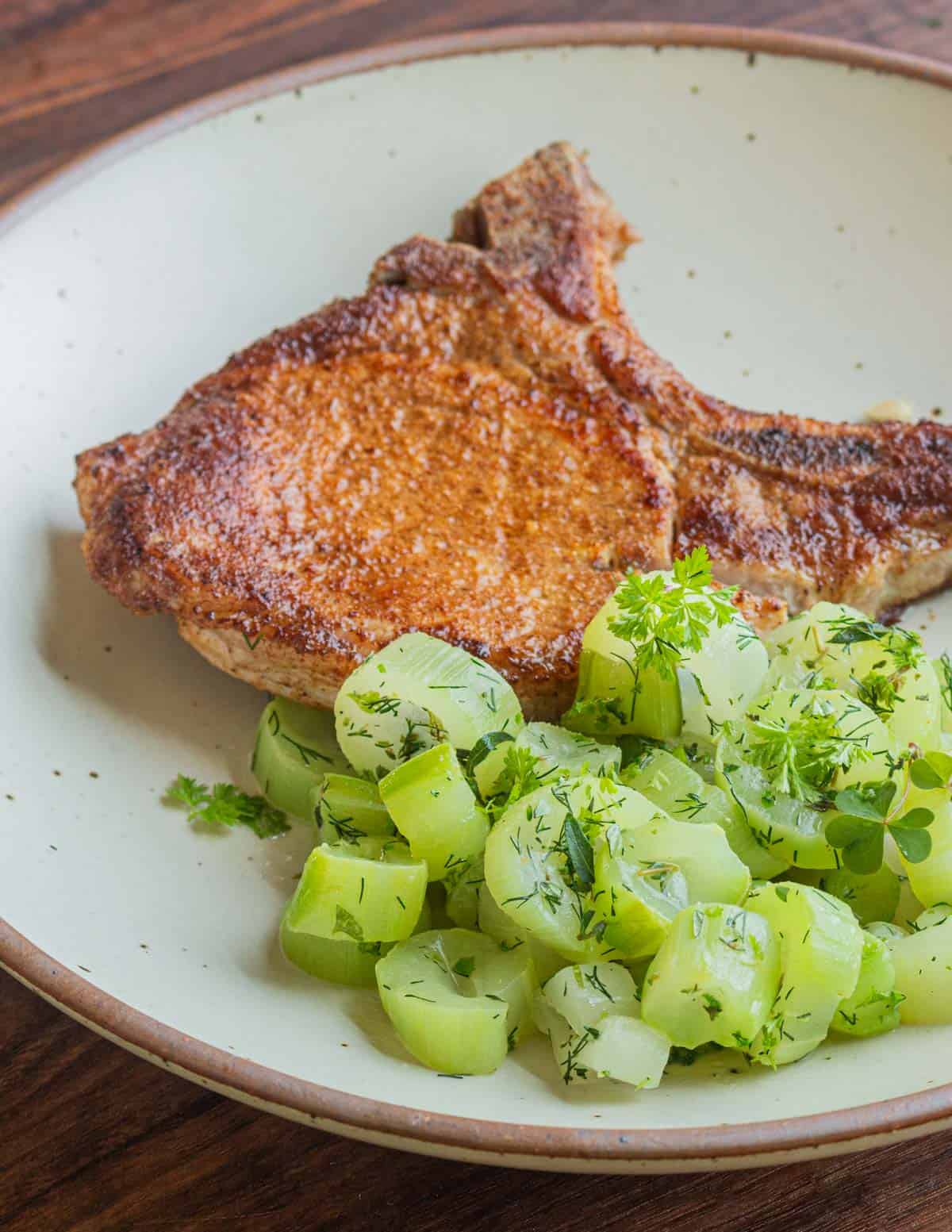
Pokeweed Poisoning Symptoms
"If poke is prepared improperly, a burning sensation in the mouth and throat is the first warning. This means your parboiling is inadequate or your poke is too old."
Sam Thayer-Incredible Wild Edibles
Pokeweed must be handled with caution as the consequences of improperly preparing it are more severe than a stomach ache or a phototoxic rash. Ingesting the root raw can cause convulsions and death. Under-cooked, you're likely to have some uncomfortable cramps and peristalsis.
The plant is also poisonous to pets like dogs and cats. My cat snuck some off the cutting board and nibbled a tiny leaf that caused immediate emesis and lethargy for days. Treat the plant with care while it's raw and keep it away from animals or young children.
More Wild Shoot Vegetables
How to Cook Poke Salad
Equipment
- 1 2 gallon pot
- 1 1 gallon pot
Ingredients
- 1 lb pokeweed greens and shoots or large, peeled pokeweed shoots
- 1.5 gallons water as needed
- Kosher salt to taste
- 3 tablespoons bacon grease, butter, or cooking oil
- lemon wedges for serving, optional
Instructions
Young poke greens and shoots
- Cut the leaves and shoots into ½ inch pieces.
- Bring the water to a boil in both a large and small pot.
- Add the poke greens and stems to the small pot, put a lid on the pot and set a timer for 3 minutes.
- Drain the greens, cover with roughly 3 quarts of fresh boiling water, put the lid back on and cook for another three minutes. Repeat the process one more time.
- Drain the greens and rinse in cold water to halt the cooking. Now the greens are ready to cook or refrigerate.
Peeled pokeweed shoots
- Bring 4 quarts of water to a boil in a pot, add the pokeweed shoots, cover, and cook for 10 minutes at a rolling boil.
- Drain the cooked poke shoots and rinse in cold water to halt the cooking. Now the shoots are ready to cook or refrigerate.
Finishing and serving
- Heat the greens in the bacon grease or cooking oil, season to taste with salt, and serve with a lemon wedge as a side dish, or however you like your greens.

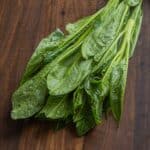
Cayce
Cayce: I havent eaten this since I was a kid. Does anyone think soaking them in salt and/or vinegar balsamic or a apple cider would enhance the taste or could it react badly to the toxins we are trying to neutralize?
M Coleman
Thanks, Alan. I always wondered if there was some way to use this plant. It’s so beautiful! I do eat knotweed tips, which are delicious, but thank you for this!
William
How do I get the slobber off my IPad?
Alan Bergo
Thanks William. I worked hard on this one.
Aleida
I have been growing pokeweed for the birds and now I know I may eat it, too. One question: in reading a Wiki-type article about pokeweed, a pokeweed berry pie was mentioned. Any idea of how edible for humans is the berry?
Alan Bergo
I mention the fruit in this post, and since writing this I've been able to taste a few things made from the fruit. It's ok, but nothing crazy, mostly just a nice color. I would never make a pie from them with all the caveats involved.